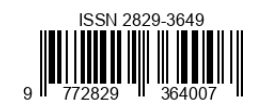Code Mixing in Legislative Candidate Campaigns in Denpasar City: A Case Study of Balinese Language Use in the Political Realm
DOI:
https://doi.org/10.56910/literacy.v3i2.1527Keywords:
Balinese language, ethnography of communication, code-mixing, speech codeAbstract
The interest in the Balinese language as a regional language is currently declining, particularly in urban areas. However, it remains frequently used in political campaigns in Bali, especially in Denpasar. This usage typically involves code-switching with other languages. This study aims to uncover the motives behind using the Balinese language in political campaigns and examine the forms of code-switching employed by politicians. The research is descriptive-qualitative, based on verbal data gathered through observing legislative candidates' campaign activities in Denpasar. Data were collected by listening to politicians' speeches. The analysis was conducted using Hymes' communication ethnography theory and Philipsen's speech code theory. Findings indicate that the Balinese language is perceived as a marker of politeness and is considered effective in fostering a sense of closeness between the politicians and the community. The language is used in a code-mixing manner with Indonesian, creating a communication pattern known as a speech code. This includes expressions of prayers or greetings like Om Swastiastu; pronouns such as titiang, Ratu, Ida, Dane; and abstract nouns like ampura, sugra, nunas, and suksma. The Balinese language is predominantly used in the opening and closing parts of speeches, while its use in the content section is limited to the lexical level. The analysis suggests that this code-switching serves as a form of politeness by the communicators.
References
Atmadja, Nengah Bawa. ‘Manusia sebagai Makhluk Multidimensional dalam Perspektif Komunikasi Lintas Budaya’ dalam Ardika, I Wayan. (e.d).( 2016). Harmoni Sosial Lintas Budaya. Denpasar: Udayana University Press.
Beratha, Ni Luh Sutjiati, dkk. (2016). Ideologi di Balik Marginalisasi Bahasa Bali. Denpasar: Udayana University Press.
Djajasudarma, Fatimah. (2010). Metoda Linguistik: Ancangan Metode Penelitian dan Kajian. Bandung: Refika Aditama.
Hymes, Dell. (1974). Foundations in Sociolinguistics: An Ethnographic Approach. Philadelphia: University of Pennsylvania Press.
Littlejohn, Stephen W. dan Foss, Karen A. (2009). Teori Komunikasi, Edisi 9. Jakarta: Salemba Humanika.
Mustika, I Kadek. (2018). Pergeseran Bahasa Bali sebagai Bahasa Ibu di Era Global (Kajian Pemertahanan Bahasa). Purwadita. Vol.2. No. 1. Maret.
Natha, Putu Gede Suarya. (2023). Campur Kode dalam Komunikasi Generasi Muda Bali dengan Para Pandita di Kota Denpasar. Prosiding Seminar Bahasa, Sastra, dan Budaya 2023. Vol.2.
Philipsen, Gerry., Couto, Lisa M., dan Covarrubias, Patricia. ‘Speech Codes Theory: Restatement, Revisions, and Responses to Criticism’ dalam William B. Gudykunst (e.d) (1989). Theorizing about Intercultural Communication. Thousand Oak, CA: Sage.
Ratna, Nyoman Kutha. (2010). Teori, Metode, dan Teknik Penelitian Sastra : Perspektif Wacana Naratif. Yogyakarta: Pustaka Pelajar.
Teeuw, A. (2015). Sastra dan Ilmu Sastra. Bandung: Dunia Pustaka Jaya.
Downloads
Published
How to Cite
Issue
Section
License
Copyright (c) 2024 LITERACY : International Scientific Journals of Social, Education, Humanities

This work is licensed under a Creative Commons Attribution-ShareAlike 4.0 International License.







